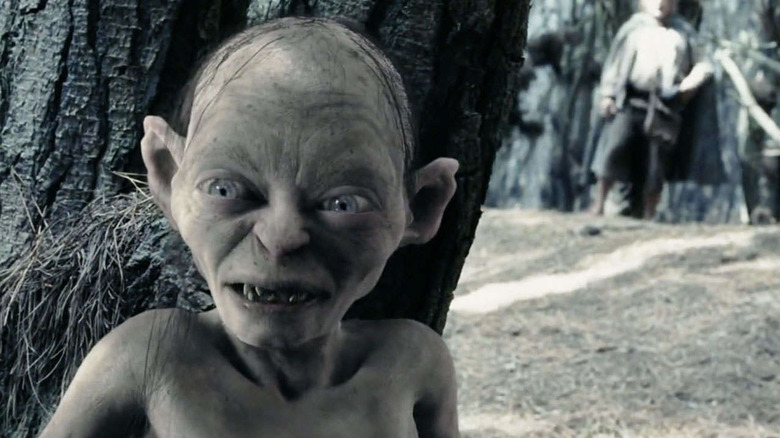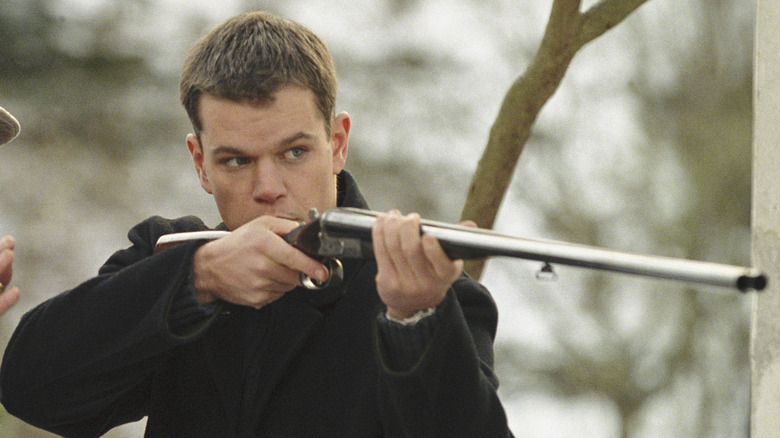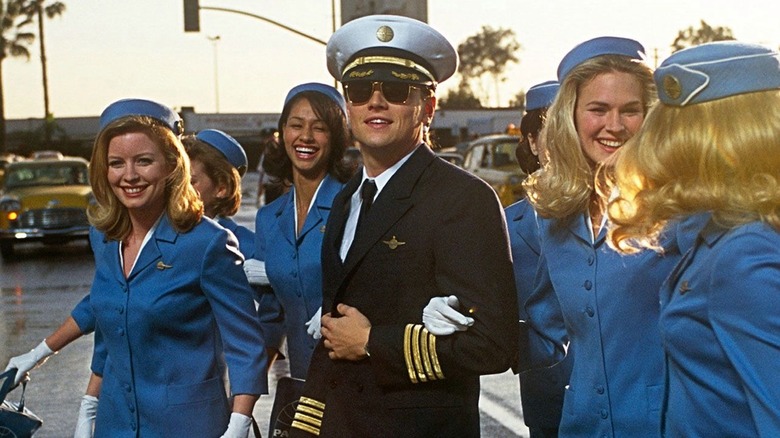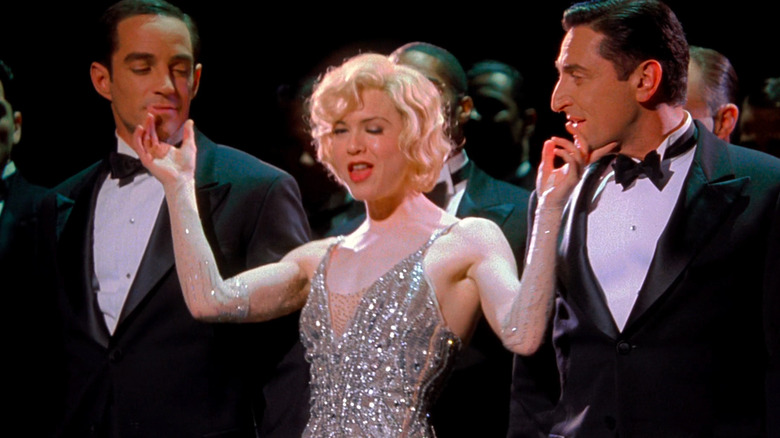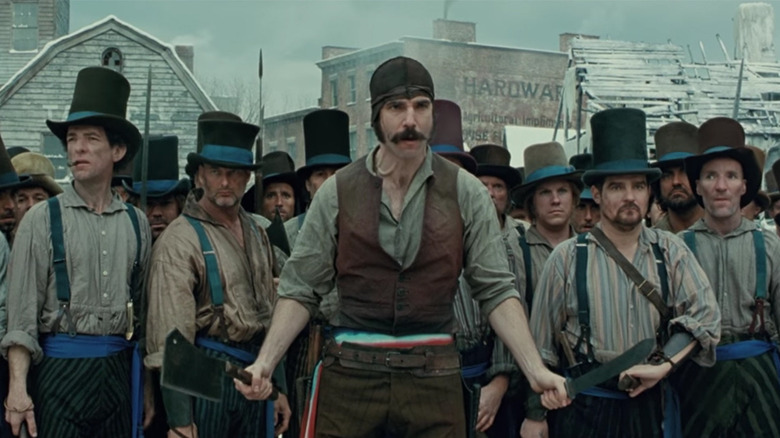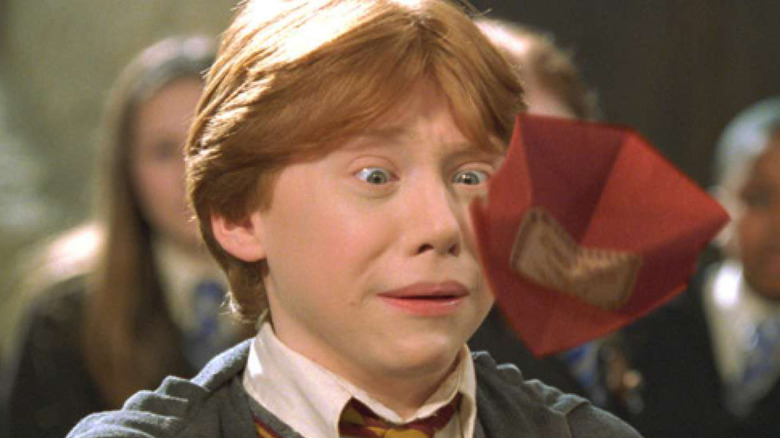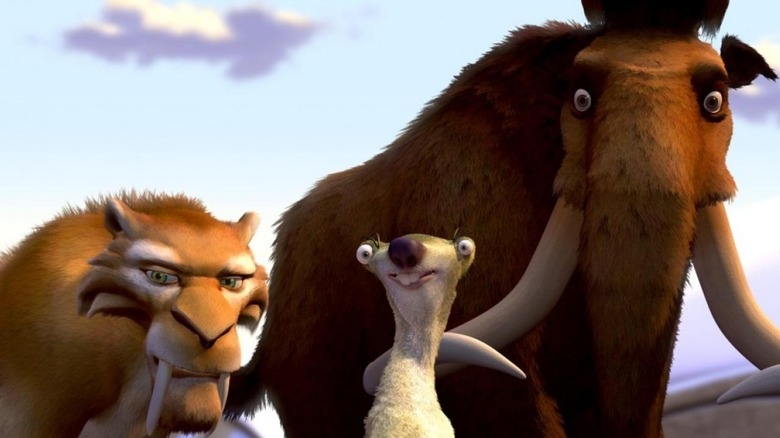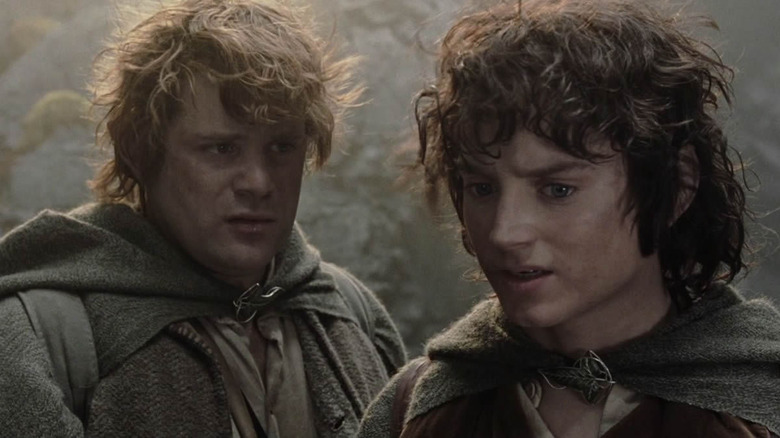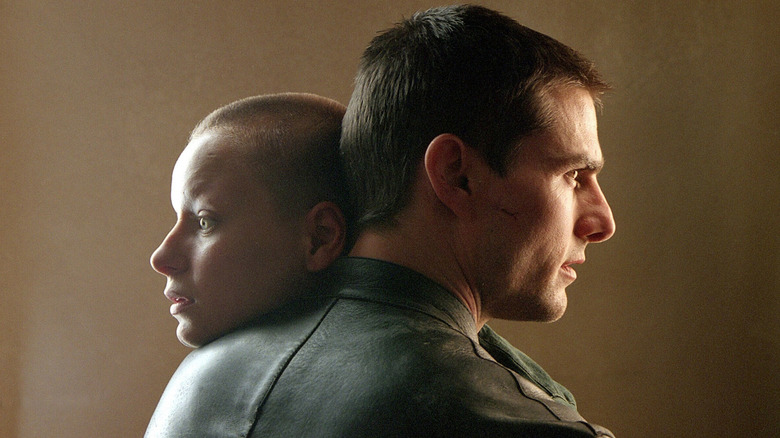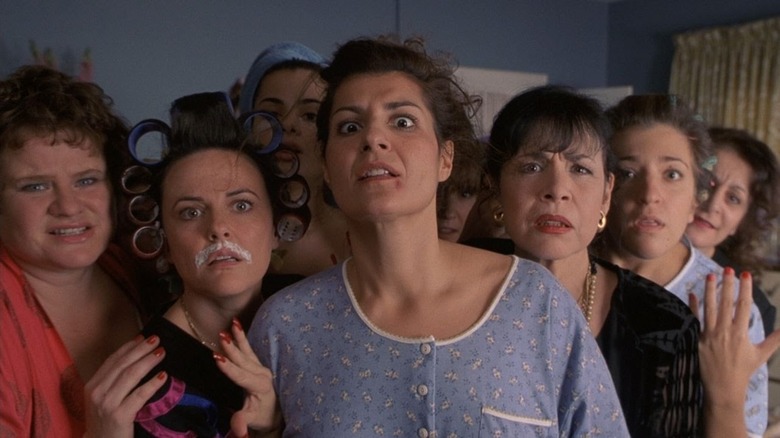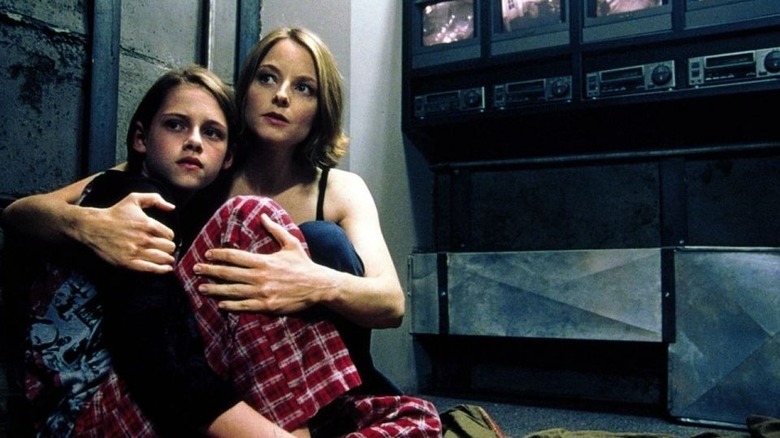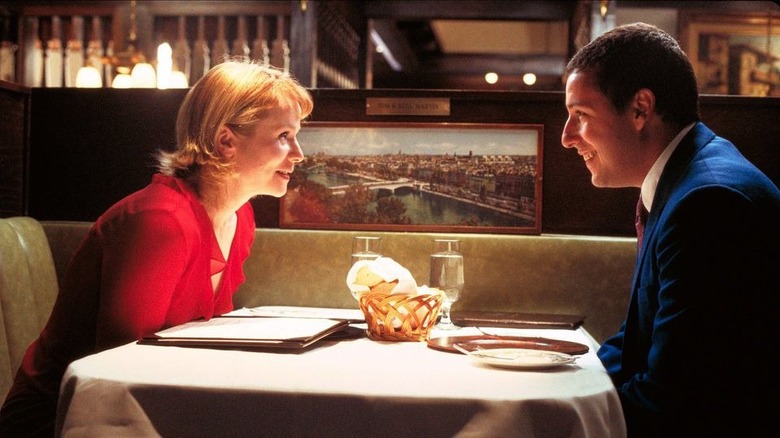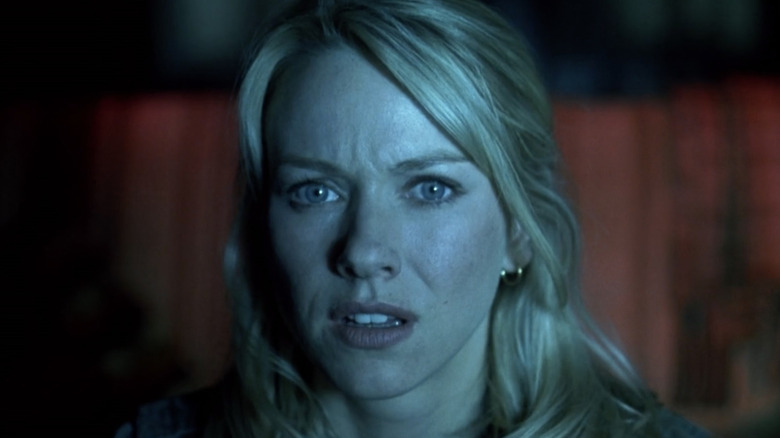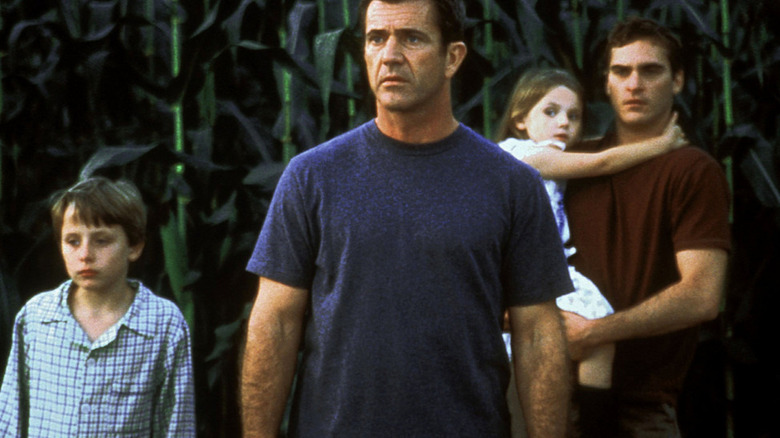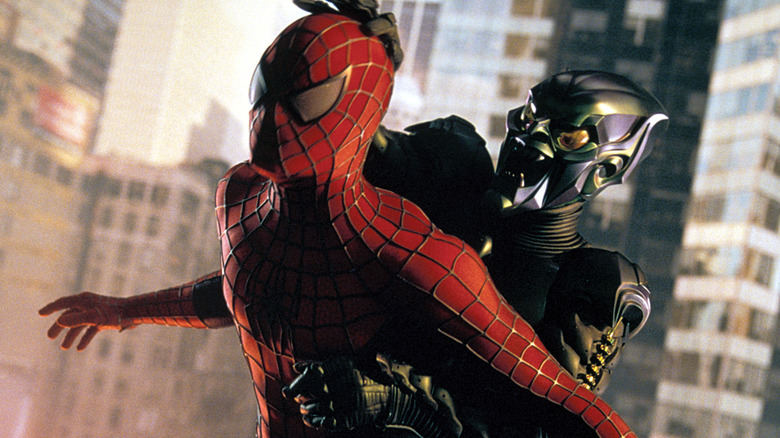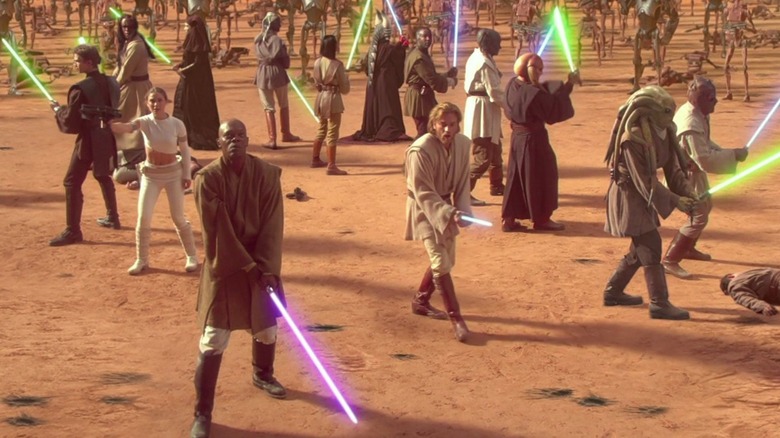Movies That Are Turning 20 In 2022
They say "time flies" a lot, but the phrase has little meaning until you start celebrating anniversaries. That's especially true when it comes to movie releases. It may seem like only yesterday you were watching some of your favorite films for the first time during their original theatrical run, when in reality that was decades ago.
How could it be that 20 years have passed since the "Spider-Man," "Ice Age," and "Bourne Identity" franchises were just started? Is it possible that two decades have passed since the first sequels to "Harry Potter," "The Lord of the Rings," and the "Star Wars" prequels hit theaters? Are the breakout hits "Signs," "Panic Room," and "My Big Fat Greek Wedding" truly a year away from being old enough to drink?
The answer is yes, time really does fly. Yet age has done nothing to dull some of the very best films released in 2002, from the Oscar-winning critical darlings to the massive crowd-pleasing hits. It would be impossible to fully touch upon every great title that hit theaters that year, but that won't stop us from trying. Here are 15 movies that are turning 20 in 2022.
The Bourne Identity
Perhaps the most influential action franchise of the 21st century kicked off two decades ago. Although its signature shaky-cam style would be more firmly established in the Paul Greengrass-helmed sequels, Doug Liman's initial entry helped set a new standard for frenetic action filmmaking. Audiences responded in kind to "The Bourne Identity's" kinetic style and energetic pace, and the film earned $121 million at the domestic box office.
Adapted from the book series by Robert Ludlum, it stars Matt Damon as Jason Bourne, a bullet-riddled man who's picked up by a fishing boat in the Mediterranean Sea. Suffering from amnesia, he soon discovers he's a highly-trained CIA assassin being tracked down by his former employer. Safe to say, he outsmarts the agency, since Damon returned for three sequels: "The Bourne Supremacy" (2004), "The Bourne Ultimatum" (2007), and "Jason Bourne" (2016). (The Damon-less sequel "The Bourne Legacy" was released in 2012.)
Catch Me If You Can
The transformation of Leonardo DiCaprio from teenage heartthrob to serious leading man kicked into high gear in 2002, when he starred in two major films from a pair of Hollywood's most revered directors: Martin Scorsese's "Gangs of New York" (more about that later) and Steven Spielberg's "Catch Me If You Can." The one-two punch helped solidify DiCaprio's stature as one of his generation's finest actors in addition to one of its biggest box office draws.
One of two films Spielberg released in 2002 (more about the first one later), it tells the (debatably) true story of Frank Abagnale Jr. (DiCaprio), a career conman who passes himself off as a doctor, a lawyer, and an airplane pilot — all before the age of 21. Tom Hanks co-stars as Carl Hanratty, the FBI agent who spends years hot on Abagnale's trail. Christopher Walken steals the show in an Oscar-nominated supporting turn as Frank's estranged father, whose absence sets his son off on a life of crime.
Chicago
Adapted from the seemingly unadaptable John Kander and Fred Ebb stage show, "Chicago" re-awakened the long-dormant movie musical genre with its jazzy tunes and sexy dance numbers. A hit with critics and audiences, the film raked in $167 million at the box office and won six Oscars, including Best Picture. Twenty years later, movie studios are still combing through Broadway's biggest hits in the hopes of striking that gold mine once again.
Director Rob Marshall adapts "Chicago" to the screen with the sultry sexiness of Bob Fosse's original stage production intact. Renée Zellweger stars as Roxie Hart, a Depression-era housewife who dreams of stardom. When she murders her lover, she finds herself on Death Row with famous showgirl and fellow killer Velma Kelly (Oscar-winner Catherine Zeta-Jones). It's up to sleazy lawyer Billy Flynn (Richard Gere) to save Roxie from the electric chair.
Gangs of New York
Martin Scorsese's long-in-development epic "Gangs of New York" was almost released on Christmas 2001, but concerns over its violence in the wake of the 9/11 attacks (plus delays in the editing room) pushed it back by an entire year. When it finally hit theaters, reactions were mixed, with some critics praising its scope and ambition and others deriding its messy storytelling. No matter what, it's hard to deny Scorsese's achievement, which was recognized with 10 Oscar nominations, including Best Picture.
It's a gritty, sprawling look at the rough-and-tumble New York City of the 1860s. Leonardo DiCaprio plays Amsterdam Vallon, a former convict who returns to the Five Points area of Manhattan hell-bent on revenge against William "Bill the Butcher" Cutting (Daniel Day-Lewis in an Oscar-nominated turn), the man who murdered his father. His quest for vengeance hits a snag as Bill becomes a surrogate father to him.
Harry Potter and the Chamber of Secrets
Wanna feel really old? Take a look at how young Daniel Radcliffe, Rupert Grint, and Emma Watson were when the "Harry Potter" franchise kicked off. It's almost hard to believe that the beloved franchise about a child wizard and his magical friends started more than two decades ago, with the second entry, "Harry Potter and the Chamber of Secrets," celebrating its 20th anniversary in 2022.
Released just one year after "Harry Potter and the Sorcerer's Stone" (2001), "Chamber of Secrets" finds Harry (Radcliffe), Ron Weasley (Grint), and Hermione Granger (Watson) investigating a mysterious monster stalking the halls of Hogwarts. Audiences lapped up this return to the film's Wizarding World, making it the third-highest-grossing film of the year with a $243 million box office haul. Its success ensured that J.K. Rowling's popular book series would continue getting adapted to the screen.
Ice Age
Twenty years after the original film was released, "Ice Age" sequels are still being produced (with the spinoff film "The Ice Age Adventures of Buck Wild" currently playing on Disney+). It's not difficult to understand why, considering the first installment was a (woolly) mammoth hit that earned $176 million at the box office (making it the ninth-highest grosser of the year) and competed at the Oscars for Best Animated Feature.
The first feature-length film produced by visual effects studio Blue Sky, it centers around the adventures of three now-extinct creatures: woolly mammoth Manny (Ray Romano), ground sloth Sid (John Leguizamo), and saber-toothed tiger Diego (Denis Leary). (Let's not forget Scrat, a nervous hybrid creature who's constantly searching for a place to bury his acorn). When the three animals discover a human baby, they trek across the frozen terrain in search of its tribe. Four theatrically released sequels, two TV holiday specials, and several shorts have followed, with no end in sight (take that, extinction!).
The Lord of the Rings: The Two Towers
The middle section of Peter Jackson's epic J.R.R. Tolkien adaptation hit movie screens 20 years ago. Like the first installment ("The Fellowship of the Ring") and the last ("The Return of the King"), "The Lord of the Rings: The Two Towers" earned critical raves and massive box office returns. It took home $218 million at the box office and reaped six Oscar nominations, including Best Picture (with wins for its sound editing and visual effects). So to say there was no sophomore slump is an understatement.
The film finds hobbits Frodo (Elijah Wood) and Sam (Sean Astin) traipsing around Middle Earth on their way to destroy the One Ring in Mordor. They're joined by Gollum (Andy Serkis in a landmark of performance-capture visual effects), a devious creature desperate to reclaim the ring for himself. Meanwhile, Gandalf (Ian McKellen), Aragon (Viggo Mortensen), Legolas (Orlando Bloom), and Gimli (John Rhys-Davies) defend the city of Rohan against Saruman's (Christopher Lee) army of orcs at the Battle of Helm's Deep.
Minority Report
2002 was a banner year for Steven Spielberg. As he did in 1989, 1993, 1997, 2005, and 2011, the world's most financially successful filmmaker churned out two movies: "Catch Me If You Can" and "Minority Report." Both were critical and financial hits, with the latter earning $132 million at the box office and an Oscar nomination for its sound editing. Its cultural appreciation has only grown in the 20 years since it was released.
Based on the short story by Philip K. Dick, it's set in a future where the police can arrest would-be murderers before the crime can be committed thanks to psychics called "precogs." When one of DC's top officers (Tom Cruise) learns he's been predicted to commit murder, he goes on the run with one of the precogs (Samantha Morton) to investigate his own pre-crime before it's too late. As Roger Ebert said in his four-star review, "'Minority Report' reminds us why we go to the movies in the first place."
My Big Fat Greek Wedding
The massive success of "My Big Fat Greek Wedding" is one of those things you kind of had to be there for to fully understand. After all, it seems almost unfathomable today that an independently financed romantic comedy with no movie stars would become the fifth-highest grossing film of the year. Yet the big-screen adaptation of Nia Vardalos' one-woman show was a big fat hit, raking in over $223 million at the box office and earning Vardalos an Oscar nomination for her screenplay.
Vardalos plays Toula Portokalos, a Greek woman who falls in love with non-Greek hunk Ian Miller (John Corbett). Toula brings Ian home to meet her large, eccentric family ahead of their wedding, sparking a very messy (and very funny) cultural conflict. The seismic hit spawned the short-lived TV series "My Big Fat Greek Life" and a 2016 sequel, "My Big Fat Greek Wedding 2."
Panic Room
It's almost hard to believe Kristen Stewart has been acting in movies for more than two decades. Yet before she was an art-house darling or the star of the "Twilight" franchise, Stewart was raking up credits as a child actress. She earned early acclaim for her performance in David Fincher's hit thriller, where the then-12-year-old star held her own next to Oscar-winner Jodie Foster.
Foster and Stewart play a mother and daughter who've just moved into a giant brownstone in the Upper West Side of New York City. The aging building comes equipped with a state-of-the-art panic room, which comes in handy when a trio of criminals (Forest Whitaker, Jared Leto, and Dwight Yoakam) break in. The film was a critical and audience hit, raking in over $96 million at the box office.
Punch-Drunk Love
Adam Sandler churned out a string of comedies throughout the '90s that were hits with audiences and misses with critics. Yet 20 years ago, the Sandman took his first step towards respectability by putting himself in the hands of everyone's favorite art-house auteur, Paul Thomas Anderson. The result earned him the first good reviews of his career, paving the way for him to stretch himself in films like "Funny People," "The Meyerowitz Stories," and "Uncut Gems" in between producing his signature absurdist comedies.
"Punch-Drunk Love" centers on Barry Egan (Sandler), a lonely, angry novelty salesman who falls in love with the wide-eyed Lena (Emily Watson). But their oddball romance is threatened when Barry gets entangled with a shady phone sex operation run by mattress king Dean Trumbell (Philip Seymour Hoffman). But that's nothing that a little love (and some frequent flier miles from frequent pudding purchases) can't solve.
The Ring
Given its subject matter, it's almost surprising "The Ring" made as much money as it did: After all, could that many people really want to tempt fate by watching a movie about a tape that kills you? Yet millions of viewers were brave enough to turn Gore Verbinski's supernatural thriller into a bonafide hit, one that reaped more than $126 million and spawned two sequels.
A remake of the Japanese horror film "Ringu" (1998), it stars Naomi Watts as an investigative reporter who hears about a mysterious videotape that kills whoever views it within seven days. Curiosity doing what it does, she watches the terrifying tape and spends the next week frantically trying to prevent its deadly consequences. Her investigation into the tape's origins leads her to some frightening revelations, ones that still scare the crap out of us 20 years later (if we dare watch).
Signs
It's almost hard to believe there was a time when Mel Gibson was America's favorite leading man and not a walking magnet for controversy. Yet in 2002, the embattled movie star helped propel this sci-fi thriller to the top of the box office charts. All told, "Signs" ended up as the third-highest-grossing film of 2002, behind "Spider-Man" and "Star Wars: Episode II – Attack of the Clones." (Gibson's other 2002 release, the war drama "We Were Soldiers," topped out at $78 million.)
"Signs" was also a high-water mark for director M. Night Shyamalan, who after this, "The Sixth Sense," and "Unbreakable," looked as though he could do no wrong (boy, was that disproved). It tells the story of a former priest (Gibson) who lost his faith after the tragic death of his wife. Living on a farm in rural Pennsylvania with his brother (Joaquin Phoenix) and kids (Rory Culkin and Abigail Breslin), his life is shaken when mysterious crop circles start popping up in the cornfields. Could this be a sign of life from another earth?
Spider-Man
Before there was Tom Holland and Andrew Garfield, Tobey Maguire donned the red, black, and blue spandex to play the webbed crusader. Sam Raimi's comic book adaptation swung to the top of the box office when it was released in May 2002, becoming the year's highest grosser. It earned Oscar nominations for its sound and visual effects and spawned two sequels and two franchise reboots.
"Spider-Man" tells the origin story of Peter Parker (Maguire), a lonely teenager who develops superpowers after being bitten by a radioactive spider. Suddenly able to shoot webs and climb buildings, Parker uses his powers for good after the tragic murder of his Uncle Ben (Cliff Robertson). He's pitted against Dr. Norman Osborn (Willem Dafoe), who's transformed into the evil Green Goblin after a bad reaction to a strength-enhancing chemical. He also finds time to romance his high school sweetheart, Mary Jane Watson (Kirsten Dunst).
Star Wars: Episode II -- Attack of the Clones
A not-so-long time ago, in a galaxy not-too-far away, George Lucas re-awakened the force... to mixed results. Made after the 1997 rereleases of the original trilogy (which included lots of derided digital tinkering and re-edits), "Star Wars" Episodes I-III told the origin story of Anakin Skywalker from his childhood as a pod racer to his transformation into Darth Vader.
The middle part of the trilogy, "Attack of the Clones," recounts the doomed romance between Anakin (Hayden Christensen) and Padmé Amidala (Natalie Portman) against the backdrop of the Clone Wars. Although the film made boffo box office returns, reviews were decidedly rotten. The film's visuals — which were shot with early digital cameras and screened on early digital projectors — drew particular scorn. No matter, though: Lucas later sold LucasFilm to Disney for over $4 billion, kicking off a brand new crop of films and television shows to keep the force alive and well.
